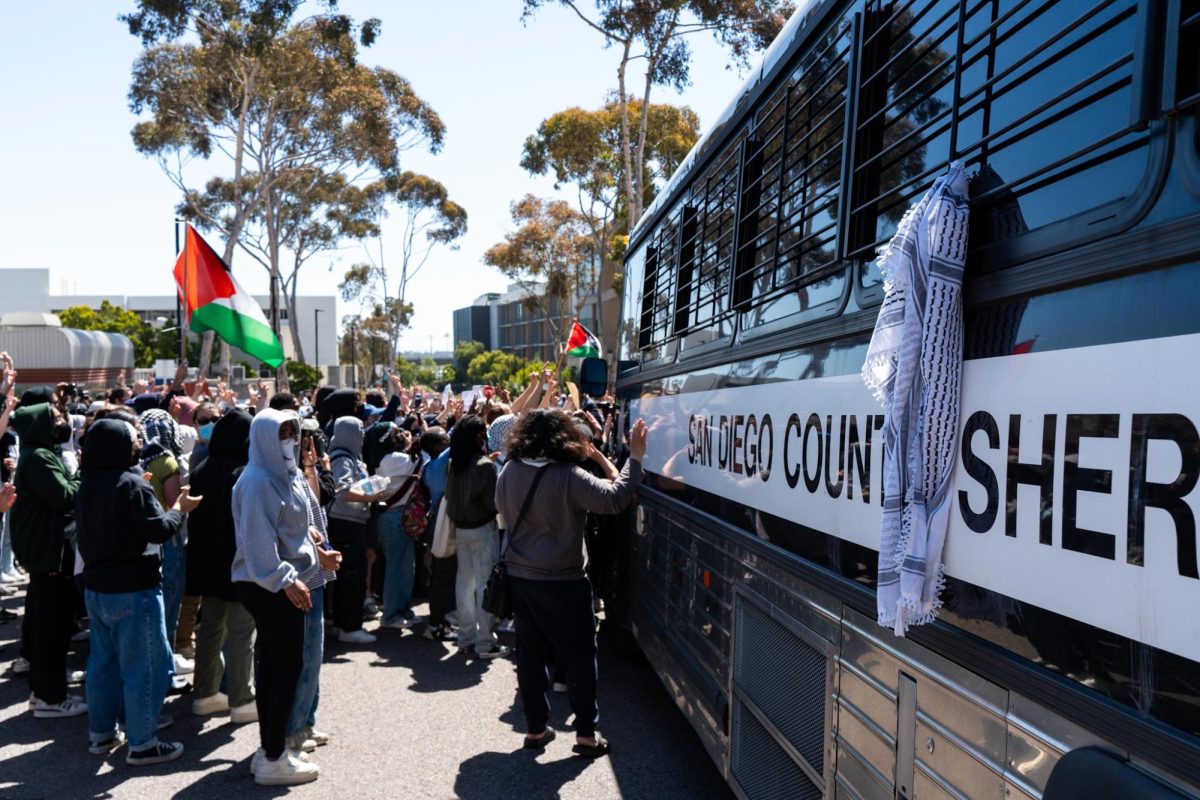For many students at UCSD, this will be the first presidential election in which they will be allowed to vote. One would hope that after years of waiting for this chance to assert their political preferences in the voting booth, these eager young voters would have a firm grasp on the election process. However, the sad but true fact of the matter is that many students are still left without a clue as to how the president and vice president are elected.
The candidate that receives the most votes does not always win the election. In fact, there have been two instances in the nation’s history in which the person who won the majority of the popular vote failed to win the election.
The first instance was in 1824 when nobody received a majority of electoral votes and the House of Representatives narrowly selected John Quincy Adams for president, despite the fact that Andrew Jackson had received the plurality of the popular vote.
In 1888, Benjamin Harrison won narrow victories in several big states to win the election over incumbent Grover Cleveland, despite Cleveland getting more than 110,000 more popular votes than Harrison.
The fact is, presidents are not elected by the people. They are elected by the Electoral College, a system that has been around since the beginning of the country and has evolved over time to fit the needs of the election.
Each state is allocated a number of electors that is equal to its number of U.S. Senators, which is always two, plus the number of its U.S. Representatives, which changes based on the state’s population.
Each political party submits a list of individuals to the state’s chief election official. These individuals pledged their vote to the party’s presidential candidate. The number of individuals is equal to the number of electoral votes the state was allocated.
When voters vote on the Tuesday following the first Monday in November, they vote for the slate of individuals from the party that will in turn vote for their presidential candidate.
The party that wins the most popular votes in a state gets to have its slate of electors cast that state’s electoral votes. This is true of every state except Maine and Nebraska, which have two electors chosen statewide, while the other electors are chosen by each congressional district.
Each elector is given two votes. One vote is for the president and the other vote is for the vice president.
In the event of a tie in electoral votes, the U.S. House of Representatives will determine who becomes president.
Some students may ask themselves why such a system would be used if it did not always represent what the majority of the people want.
The early United States was made up of 13 states of various sizes that fought hard for states’ rights while remaining suspicious of a central government.
The Constitutional Convention of 1787 considered several options for electing the president and vice president before settling on the Electoral College, according to William C. Kimberling, the deputy director of the Federal Election Commission Office of Election Administration, in an essay of his titled, “”The Electoral College.””
One of the first ideas was to have Congress choose the president. This idea was quickly rejected because many people at the Constitutional Convention felt that this would cause too much political bargaining and corruption among candidates and members of Congress. Others thought that it would upset the delicate balance of power between the legislative and executive branches of the federal government.
Another proposal was to allow the state legislatures to select the president. This idea was rejected because some feared that candidates may become too loyal to the influential legislatures that they would shift the balance of power from the federal government to the states, undermining the idea of a federation and central government.
A third, and more practical option, was simply to have the president elected by a direct popular vote, with the candidate receiving the most votes winning the election. While this might seem to many people today as a viable option, it was rejected by the framers of the Constitution.
The early citizens of the United States were very spread out along the East Coast. A national campaign would be very difficult for a presidential candidate. The framers feared that without sufficient knowledge of candidates, some voters might simply vote for those in their home state that they had heard about. This would cause the large states to gain a majority of the power in electing a president and leave the small states with little say in the election.
The framers finally decided on the College of Electors. According to Kimberling, the original idea was that the most knowledgeable and informed people from each state would select the president based on merit alone, without any regard for his political party or state of origin.
The structure of the Electoral College bares a strong resemblance to the Centurial Assembly system that was used by the Roman Republic. This was no accident, as many of the framers were well-schooled in ancient history. Under the ancient Roman system, adult males were divided into groups of 100, called Centuries. These Centuries each had one vote on proposals submitted by the Roman Senate. In the Electoral College system, the states act as the Centurial groups.
The Electoral College has undergone several different phases since its inception in Article II, Section 1 of the Constitution.
The initial model of the Electoral College differed in that the initial electors were not chosen by the people on election day, but rather by the individual state legislatures. The electors were each given two votes for president. One vote had to be for someone outside their home state, in order to prevent electors from voting for their home-town candidates. The vice president was not elected as a running mate with the presidential candidate. The vice president was the person who had the second-highest total electoral vote in the presidential race.
After the first four presidential elections, the Electoral College was changed. The Twelfth Amendment to the Constitution states that each elector only gets one vote for president, while the other vote would go for the vice president. The amendment also stipulates that if no one receives an absolute majority in the election that the U.S. House of Representatives would select the president from among the top three candidates. Also, if no candidate received a majority in the vice presidential election, then the U.S. Senate would select the vice president between the top two candidates.
Through the years, the Electoral College has evolved into what it is today. While the manner of choosing the electors is still left up to the State legislature, all states now have systems where the voters choose the electors. All states except for Maine and Nebraska use direct statewide elections to choose their electors.
The Electoral College is not without its criticisms, according to Kimberling. Among the questions raised about the Electoral College is the risk of electing a president who won the electoral vote but lost the popular vote, the risk of “”faithless”” electors who vote for a candidate other than the one that they are pledged to, the possibility of the Electoral College discouraging people from voting and the college’s failure to accurately reflect the national popular will.
The current system is not, however, without its merits, according to Kimberling. Some arguments for the Electoral College that he cited are that it requires a distribution of popular support to be elected president, it enhances the status of minority interests and it maintains a federal system of government and representation.
That is our system for electing the president in a nutshell. Hopefully you will be a little more informed about the process as you shuffle into the voting booths tomorrow.







